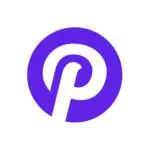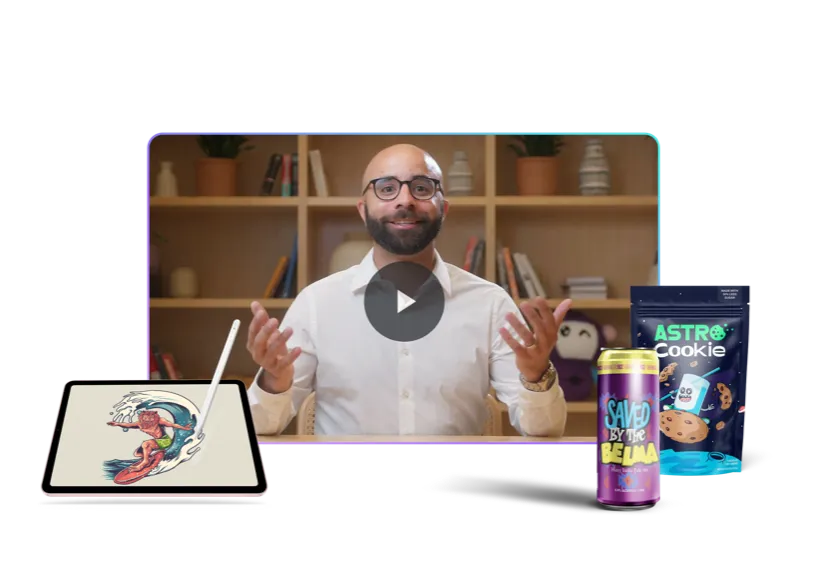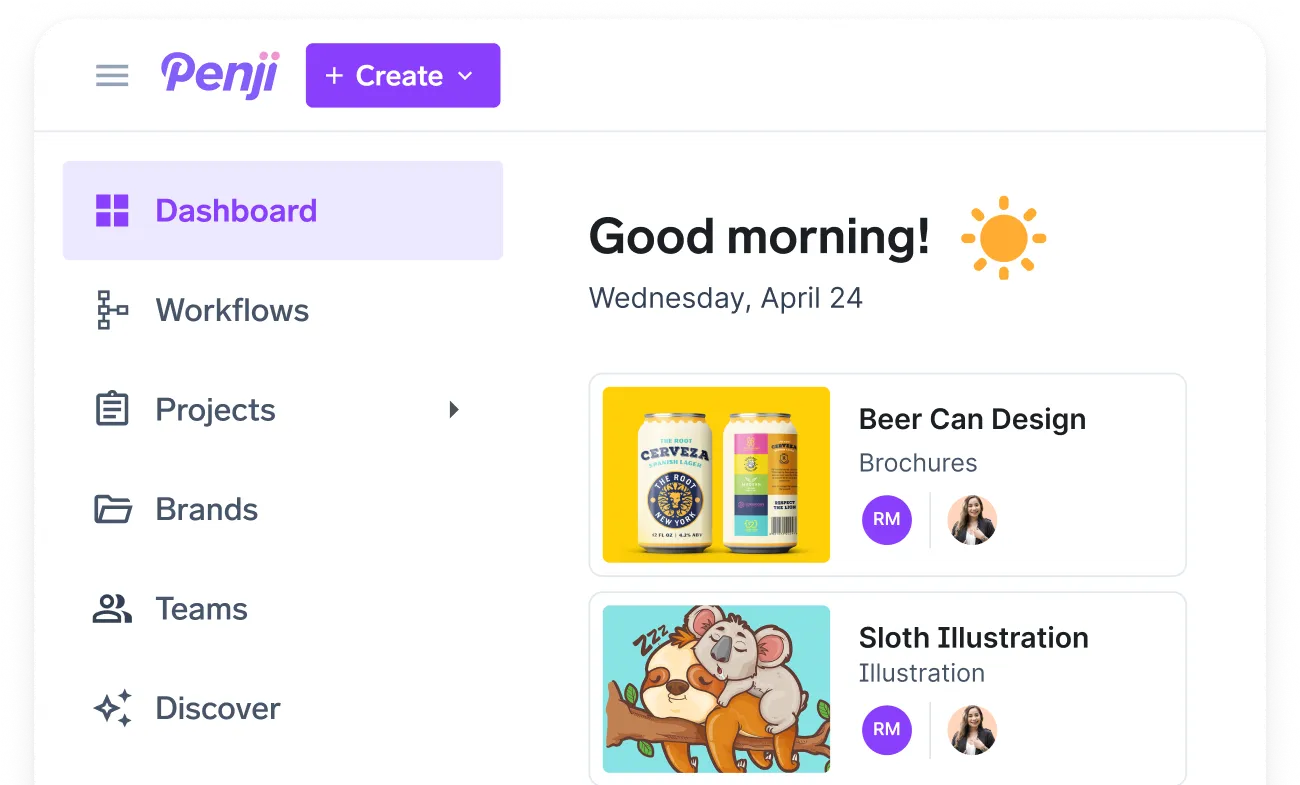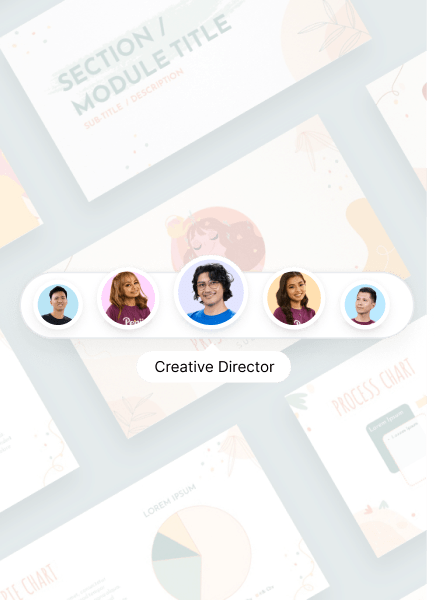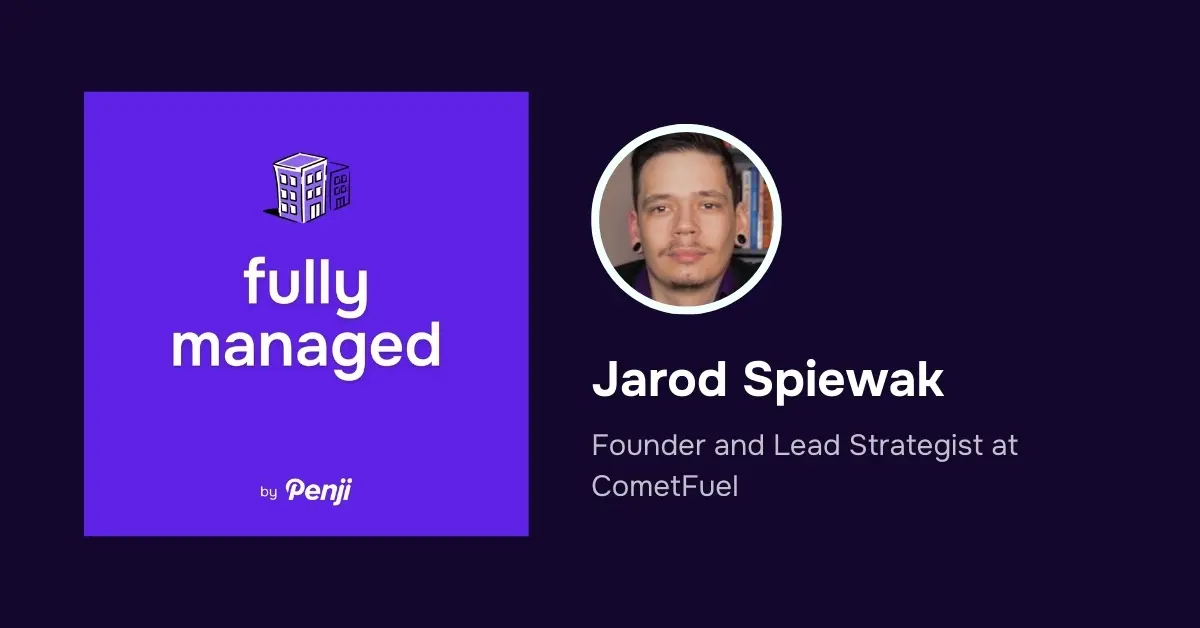
Introduction
Shannon Donnelly: Alrighty. Hello, everyone, and welcome to the Fully Managed Podcast, the podcast where we discuss marketing and business tips to help assist you on your business journey. I’m your host, Shannon Donnelly, Penji’s Partnership Coordinator, and I’m joined here today with a very special guest, Jared Spiewak from Comet Fuel. Thank you so much for coming on with me today.
Jared Spiewak: No, thanks so much for having me. I appreciate that.
SD: So could you start by introducing yourself a little bit? Tell us a little bit about you, anything that you deem relevant to your professional journey, and all the in between. You can even share a fun fact that is irrelevant to your professional journey. That’s always fun. All of the good stuff.
JS: Yeah, so my name is Jared Spiewak. I’m the founder and lead strategist of CometFuel. CometFuel is a revenue marketing agency that helps service-based and SaaS businesses typically scale to about five to ten million dollars a year. And we’re doing that through advertising, generally most of the time through Google Ads. The background of the company is I got started in the marketing world when I was fourteen. I basically graduated high school when I was sixteen, finished college when I was eighteen. And so because I was doing that faster, I had to figure out how to make money. So I Googled, like a lot of people do, how to make money online, full of nothing but scams. So that was super helpful. But it got me to understand that, hey, there’s a world of online marketing. And I was a kid that grew up on the Internet, so that seemed interesting to me. And I ended up starting writing SEO content online that led to me doing a little bit over a year in corporate real estate marketing, led to me working for a law firm marketing agency for about two years in an SEO role, became the lead SEO strategist, and then that transitioned. In twenty eighteen, I founded an agency that was originally called Blue Doc Media that focused on SEO. In twenty twenty to twenty twenty one, over time, we started to introduce Google Ads as a service. And we noticed that our clients were able to grow faster and easier through the ad channels and more predictably than SEO. And a big challenge that we had at the time was really being able to measure results for clients because everybody hired us to make more money. And with SEO, the attribution is a little bit more difficult. It holds a very special place in my heart, but when working with clients, it’s very difficult to explain, hey, this is what Google’s just feeling, and maybe it’ll fix itself in three months, maybe six months, maybe it won’t. Who knows? Let’s just hope and wait. Not a very confidence-boosting conversation to have with somebody. And so we noticed that we’re, one, making more money from ads. Two, clients seem to be happier. So we transitioned from being focused on SEO to an ad agency. And then that kind of transformed into a big focus on revenue marketing and attribution and really being able to prove that, hey, if you spend a dollar, unless we can prove to you that that resulted in X amount of revenue, then it just simply doesn’t count.
SD: And then where, what, when do you get to Comet Fuel?
JS: The transition in twenty twenty to twenty twenty one is when we rebranded to Comet Fuel. So we rebranded from Blue Dog Media to Comet Fuel with that transition. So in twenty twenty, it kind of happened on the back end. And then twenty twenty one, we kind of made a public announcement to everybody like, hey, the name has changed. The website’s now up. And in twenty twenty, clients were kind of made aware that one, we were changing the name because Blue Dog Media was a name I literally pulled out of a hat. I was like, OK, agencies tend to be called animal plus name. Let’s figure something out so that I can not spend the next six months just worrying about the name.
SD: No, that makes a lot of sense. Well, how did you, what inspired you to create that name?
JS: I just bought a domain that I liked the name of because I’m not that creative. I’m a technical person. I’m not a creative. And I knew I actually got the idea from a guy named Ryan Stewart, who runs Webris. And what he did when he created his business name is he just went online and found a domain name that he liked, and he bought it. I was like, oh, that seems like an interesting strategy. So I did the same exact thing. There are plenty of websites that’ll find like brandable domain names. And so I put it in front of a bunch of people. I said, Hey, like these are the five that I’m interested in. Like everybody vote, what you like. And then, you know, that was sent to the team that was sent to clients that was sent to, you know, friends and family and Comet Fuel ended up being on top. So that’s what we ended up purchasing. And that just made it really simple where I didn’t have to think that hard about it.
The Balance of Technical and Creative
SD: That’s very interesting. I definitely understand that though, because I’m not a very creative person. And I constantly tell this to my boss when he thinks he goes, think of names for these different things. So these different segments that we want to do on the podcast. And I’m like, I’m going to use ChatGPT. I don’t have like, my brain does not work for these types of things. Like I’m either doing comedy, like something that I think is funny and he does not support. Or I’m just thinking of something very bad. And it’s usually cheesy because it’s funny to me, but it’s not, it’s probably not really funny.
JS: Yeah, you’re not allowed to turn the podcast into just a massive crap post.
SD: Yeah, I can’t exactly. That’s what I’m constantly thinking of. Like, I’m like, I think people would find this entertaining, but probably only my generation. And that’s not really the people we’re going after. So it’s not really, I’m not, I shouldn’t be in charge of the creatives at all. It’s funny that I work for a design agency, but it’s not, not me.
JS: Yeah, no, I feel you there. That’s why we brought on a creative director last year. And that’s been really helpful for us because I have, you know, I have a good amount of technical knowledge. But when it comes to anything creative, like you, people tend to be either strong on one of the two sides. And so it is really nice to have that blend of both technical and creative, because creatives are an entirely different breed of people. And like, I don’t understand how their brain works, but it’s great.
SD: Yeah, it’s not, I can copy really easily. Like I can create art, but I can only like draw active inspiration from something else, but it’s never, I can’t create original content out of my head. That never happens. It’s very difficult. But yeah, I can completely understand that. It’s nice to have that even balance. How do you, so, OK, that brings a question that I have then. How do you, work with a creative director in a way that you’re balancing out both the technical side and the creative side like how do you, I don’t know, how do you ensure that they’re, you know, feeling creative and being able to create new stuff, but also your influence also creates success for them?
JS: Yeah, so we had originally a small creative team. We had copywriters, designers, developers. And I was kind of managing that entire process and what I recognized was I really just, I knew I couldn’t give really good direction. I knew I couldn’t give really good feedback aside from like, hey, when I click this button it doesn’t do what it’s supposed to do like this is broken like please fix it like that. That’s as detailed as I could really get. And so when I brought on a creative director, I’m a big fan of objective-based hiring. So not just hiring someone based off the job role, but saying like, this is specifically what I need you to do because a creative director just isn’t a creative director. And the one that we went with has a lot of experience with managing teams and building teams and being in leadership roles. And so when she came in, it wasn’t really like, OK, great. Like, what do I do now? Like, how do I be the creative director for Comet Fuel? It was more of, OK, great. Now that I’m here, I’m going to show you, I’m going to tell you, like, this is what I need to be doing. Like, this is how we’re going to do it. And so that was really easy. The thing that I’ve had to learn is how to best work with creatives. And you have to find the balance between creating guardrails, but not making them too narrow. Because when you are creating something, especially from scratch, there’s an infinite amount of direction that you can go, an infinite amount of ideas. And so, if you just say someone, like, hey, can you create conceptually something like this, you’re just never going to get that deliverable back. Because it’s just going to be an infinitely iterative process of going through, like, oh, maybe we could do this, maybe we could do that. And so it’s really important to make sure like, OK, great. Like here’s the budget, here’s the timeline, here’s the acceptance criteria, whatever that might be so that there is a clear direction that has to be met. There are guard rails for that project, but they’re not so narrow that the creative feels that they’re being choked and that they can’t really express themselves or really like play around with the ideas. And I think that that’s just an active balance that we’re trying to really figure out because creative is the most expensive and the slowest part of the process of what we do. And so we have to be very cognizant of the budgets, but we also want to make sure that we’re not just creating cookie cutter work. So it’s really just a matter of guardrails and just iteratively practicing like what’s too wide, what’s too narrow.
SD: No, that makes a lot of sense. I think it’s nice to have the technical side of things to create those boundaries, because I think that I’ve noticed at least that the hardest part for creatives is when a job is so vague. And there’s not parameters for it because especially when you’re a creative person, I can’t relate, but that, you know, your mind just goes wild because there’s so many options of doing things. And if someone is so vague in their approach on what they want, then they clearly want something that’s more narrow than the vague approach, but they can’t really narrow it down to what it is. So it’s more likely that jobs will be unsuccessful or have to be edited and take longer because they can’t see what they want. And that’s a hard job for a creative to be able to make sure that what they’re doing is quote unquote correct for the client.
JS: Yeah, and I think that what’s also important is where my position comes in a lot of times is more of a strategy role. And part of my job is pitching those ideas to the client. And so for me, I’m that kind of intermediary in a lot of ways where it’s you go out and create the plan, and I’ll figure out a way to turn that into a deck to pitch it to the client in a way that they can understand and a way that they can improve. And if there are things that are not quite where we want them to be yet and whatnot, I can make sure that we’re directing that in a certain way that we can kind of fix those issues on the back end before it becomes an actual issue in production, but still able to keep the project moving along to make those deadlines. And so I think that there’s a real balance between having the creative team be able to have the freedom to do what they want and still being able to make sure that that’s positioned and put in front of the client in a way that they can actually understand what it is that we’re doing. Because ultimately, a lot of the clients that we’re working with also aren’t creative people. And so if you present something that’s more conceptual, their interpretation of that concept can be wildly different from what you might expect or would hope that they would have an idea from that concept.
Client Communication
SD: No, that definitely makes a lot of sense. What do you think is the biggest challenge when having those kinds of conversations?
JS: That’s a good question. I think that when we put something in front of somebody, it’s important that they see the same vision that we do, that they understand that, hey, this is the reason why we might recommend repositioning your offer. So like who am I actually going to be talking to? Like what’s the difference between a lawyer and a paralegal and a case manager and the intake specialist and all these other roles? And so sometimes doing something as simple as here’s the process that literally every other company does for the service. But we’re just going to actually explain that process step by step for you. And now it seems a lot different. And you then put a name behind that. And now it’s like, here’s our product for our service. And it might be like ninety percent the same as what somebody else does. But when people are looking, they click on three different ads, they look at three different competitors and they go, what’s the difference here? And they go, oh, this accounting firm says free consultation. This accounting firm says free consultation. This accounting firm says get your, I’m just going to make something up, you know, get your real estate safety tax plan or something like that. It’s like, oh, it might be the same underlying fundamentals for that tax plan or that analysis of that real estate investor’s taxes and portfolio and structure and whatnot. But the way that they’ve positioned that now makes it seem like, hey, here’s something that I can get from these guys that I can’t get from the other two. These two are just offering free consultations. These guys are offering some sort of plan or program. And so that’s a lot of interesting. And then you might be able to take that standard conversations that you have with somebody that you’re already doing. Turn that into a nice looking deliverable. And now you have something tangible that somebody is getting as a result of that consultation. So that free consultation now turns into something that is much more tangible. It’s, hey, there’s a clear process that you’re going to walk away from this conversation with a deliverable in hand. That’s part of this overall program, a system that we have that you can’t get anywhere else because you can either be different or better. Everybody wants to be better. But here’s the reality. It’s really hard for the consumer to tell what’s better. And when you try to communicate that, we have more reviews, we have a bigger team, we’ve been in business for longer. Those are really weak differentiators. And so it’s much easier and much faster to get ahead by being different in the eyes of the consumer by being better. Yeah. Or being better, rather.
SD: No, I one hundred percent agree with that. I think the way that if you’re able to educate when you’re offering your services as well, I think that’s something that can really convince a consumer to be interested in your product or service specifically because they might not. Yeah. As you said about the lawyer specific example. People might not understand this process. And if they not only have an understanding of it, but know the way in which you’re doing it, like they’re educated and they understand that you’re doing it that way, I think that is more persuasive than just something like an offer or a discount or something like that, because they don’t understand what they’re getting in that discount. And to be, to have a better understanding of it also builds a level of trust already between like, I’m offering you this knowledge, but I’m not getting anything from it directly other than you maybe being more interested in my service. And I think that people do trust companies more that provide that level of education and to understand the process rather than just trying to grab them with gimmicks.
JS: Yeah. So ultimately what somebody feels and what they’re thinking is that you figured out something that everybody else hasn’t. What the reality of that is different, but it’s something that I hear all the time because we have names for our products and services. And even if we go like, hey, like, eighty percent of this is roughly the same process that a lot of other people use. But because we explain it step by step and we go into detail, like, here’s what the deliverable is going to look like. Here’s what we’re considering in that process. Where other people are like, yeah, we’re just doing competitor research. And we’re like, this is what we’re looking out for. This is how we’re doing it. This is what we’re considering. All of a sudden, it seems like we have a way more detailed process just because we’re just explaining it. And sure, we could point to differentiators on a technical side. But here’s the thing. People aren’t going to understand what the difference is that we’d use tool number one or tool number two to research competitors and what the pros and cons of those data sets of the tools are and how they collect their data. But it’s based off of how they perceive what is going to happen, what they perceive that value to be is going to determine if they’re going to move forward. And ultimately what you’re trying to do with your marketing is build momentum towards that offer. You’re trying to get people excited for it. And if you’re familiar with funnels or multi-step pages, this is exactly what that’s doing, is it’s trying to build more and more momentum to that harder offer to get people excited. Think of going to a concert or something. Do you go to a concert and doors are at seven and exactly seven a.m., the headliner comes out and things are crazy? No, of course not. Why? Because the momentum hasn’t been built. The audience isn’t ready for that larger offer. What happens is you get in, doors are at seven. If there’s a bar, people are kind of walking around. There’s a lot of space in between people. There’s probably just music playing on the speakers. There’s a bunch of stage hands setting everything up. And then the opener comes out. And the levels on the audio mix is OK. And people start to crowd around it. Some people leave because they’re just there to see that local band that they love. But as the bigger and bigger bands come out, the crowd gets tighter. The momentum builds. People get more and more excited. And then like the lights go out, everything’s silent. And then all of a sudden the band goes on stage and everybody gets crazy. And then the band starts playing and you wouldn’t have gotten that reaction from people if you had not built all that momentum before. And that’s a lot of what you’re able to do with better offers is you’re saying, hey, like come and download this item or you know get my top of funnel offer that’s going to make you interested in what we’re doing and then from there I want to present you with a call that we can have that you’re going to get this deliverable it’s like wow like that’s actually kind of interesting like nobody wants to get on a sales call with you like sales calls suck like sales people suck like Nobody enjoys it. But if it’s like, oh, there’s actually value from me, like I’m lowering my risk that I’m just going to get on a call with somebody who’s going to try to sell me like a used car. They’re going to be super aggressive. Maybe I don’t like them. Maybe they’re going to like twist my arm and convince me to do something that I don’t actually want to do. But, oh, this actually seems valuable. This seems like even if I don’t move forward, I’m going to come out of this ahead. Now that seems interesting. Now that momentum is built. Now I’m on that call. The momentum still has to be built. You know, you don’t want to fumble things right away. Right. The five yard line. But now that you’re on that call, the momentum still has to be built towards that offer. And that is perceived to be much more exciting and much better than just saying, hey, great. Theoretically, we’re an accountant that can help you reduce your taxes, book a consultation call. Maybe we can help you. Maybe we can’t. Like, OK.
SD: Yeah. I really appreciate the concert analogy for the marketing funnel because I do. And if you can build that, people are familiar with you, whether that’s through nurturing, whether that’s through education, whether that’s through like a VSL where it becomes a lot more personable. They begin to know you more. They begin to like you more. They begin to trust you more. five thousand dollars on this landing page right online and we’ve never had a conversation before there are people who are able to do that because they’ve been able to even if it’s just on that single page build enough trust credibility authority so on and so forth that they were able to get that done and so you still have to go through that process of making people comfortable to take that action you know just putting in front of someone and hoping for the best just is only going to work so often.
The Most Crucial Part
SD: Yeah. Well, what do you think is the most crucial part of this process? Say if it was left out, then it would just fall apart. You’d never turn a lead into a client.
JS: The offer. So at the end of the day, like that’s the most important. So with paid media, it’s typically, you’re going to have your traffic. So whoever you’re actually getting in front of, let’s just take Google ads as a platform. As soon as somebody clicks on the ad, Google’s no longer responsible for what happens after that. All you’re doing with Google is you’re buying traffic. Then they’re going to come to the creative. Now, technically the creative is also the ad that they saw before they clicked. But for this example, I’m just going to say it’s the landing page, your copy, your design, your development. People don’t have high expectations for design. As long as it doesn’t look awful, people will be OK with the design. Development, pretty straightforward as well. Do the buttons do what they’re supposed to when I interact with them? OK, great. But what that copy is doing is it’s positioning your offer. It’s having a certain emotional impact to say, hey, this is our justification for why you should take that action. Like, here’s why you should be willing to book a free consultation or here’s why you should be willing to give us your email address, so on and so forth. But ultimately, what it is that you’re offering that person is going to have the biggest impact on whether they want to move forward. That’s going to have the biggest impact for people wanting to move forward or not moving forward. Where if you could convince people like, hey, Here’s our again, our email marketing software. That seems like a great deal. Would there be red flags? It’s probably a scam. Absolutely. Because it’s a good example. But the point is, if the offer is strong enough, people won’t care how long you’ve been in business. They won’t care that you have limited reviews because what you’re offering is just is so enticing that they want to move forward. Everything else can be much weaker.
SD: The offer can be great, but if you don’t have a clear understanding of what they are or who they are it’s not really going to work. The amount of websites that I’ve viewed that I do not understand what they actually do when it comes down to it is absolutely absurd. I’m not going to spend more time investigating that. I’m just not going to use their service.
JS: Yeah, I definitely run into that sometimes. And sometimes we’ll be working actively with clients. Obviously, I can’t say the company name, but we were working with a business. And I want to say we worked with them for just under a year, and I still have no idea what it is that they do. Conceptually, I kind of understand, but the biggest issue that we had working on that project is the copy and the offers were all way too vague and kind of conceptual. And yes, it talked about results, but then it came from how do you actually do that? And it’s like, sure, like, I kind of have an idea. But can you explain to me like step by step how this is done? It’s like, I love that you have so many great testimonials and case studies, and you’re talking on all these big stages for the industry. And it’s very clear that people who work with you get great results. just still didn’t really know what it was that they did. And I have a feeling that their prospective customers also didn’t really understand. And that’s obviously not a very good place to be in because how are you expected to make an informed decision when you don’t really understand what decision it is that you’re making?
SD: Yeah, I think that you can have a really appealing offer, but if someone doesn’t understand exactly how you’re doing what you’re doing, it’s not really going to be a good selling point. And it’s surprising how many people are very vague with the services that they provide. And I understand that it’s probably around that level of secrecy that a lot of agencies have for the worry that competitors will copy them. But again, I think that’s, we discussed that. I think that’s just not really something that people should be concerned about. They should really be more concerned about their customers and what they are looking for. And if you’re unclear about what you have, then you probably aren’t going to continue to look at your website. They’re probably just going to leave.
JS: Yeah. And I think that for agency specifically, it kind of comes into like two different camps. You have like the one camp who they also don’t really understand what it is that they’re doing necessarily. You’re essentially raising your hand and saying, hey, I have a solution for that problem. And then when they interact with that ad, they’re then being redirected to a page on your website or a landing page. And here’s the difference between the two, et cetera. That for so many people is a much better example because there are people that just haven’t really just thought about how Google works, to be honest. And so they’re like, why am I worried about like this conceptually this AI and like, yeah, sure, like you can get me like a ten X ROI allegedly according to your website. But like, how do you actually do it? Like, how does it work? And what they’re missing oftentimes is just that understanding, that baseline knowledge of, OK, great. So there are these things called keywords. And when people search on Google, those keywords determine if our ads are going to show or not, because some people just think that Google chooses entirely what your ads run for, which depending on what you’re using can be true sometimes. And sometimes that’s all it takes to go, oh, wow, I’ve had like four sales calls with the agencies before. I just didn’t even understand that really basic concept because they were all talking like high in the sky and like, theoretically, this is what could happen as a result. And theoretically, this is what we’re doing. But here’s the actual trench work. Here’s the actual groundwork. Here’s what the deliverable looks like. Here’s how the system functions. It’s just a lot more tangible to people.
Simplistic Language & Dream Collaboration
SD: I think simplistic language is something that’s really important in that as well, because I think that you can actually explain something very thoroughly that a marketer would understand, but not the average person that’s looking to buy your services. And I think that a lot of marketing has this exclusive language that people don’t understand conceptually without looking it up. And I think people have different words for things, too, where other marketers might not even understand what they’re really talking about. And I think that’s something that is very prevalent in how people advertise their services. And I think it’s not like a customer centered approach when they’re doing that, whereas they’re just kind of thinking something conceptually as their job position and not. We got to get out of our marketing brain sometimes. OK. If you were to team up with a brand or a company, any brand or company that would be like your dream to team up with, what would it be and like what do what would be your inspiration for a campaign with them?
JS: Yeah, so two good questions. So a company that I’d love to work with one day is Close. So that’s a CRM software that I’ve been using for years. And I’ve used their products for a long time. And I’ve just been a big fan of the product. I’m a big fan of the story behind it, which they were an outbound sales company, and they built this product in-house to help their own sales team. And then eventually their customers were like, hey, I kind of want that too. And eventually that turned into a SaaS company. The founder, Steli, he created ton of content on B to B sales and ton of content on the growth of their company. And I found that to be really interesting and also really helpful for me when I was starting to, I would say, get better at sales and not just jump on calls with people and kind of hope for the best, but actually start to develop processes for turning leads into actual sales. And I did find that content very helpful, especially on the cold emailing side of things, which we’re running a lot of cold email campaigns at that time. And it helped me understand a lot of the areas where we were going wrong and their software really helped me kind of run those campaigns in a way that was much simpler than a lot of the other software that I was trying to use out there, but still get all the results that I wanted. And it’s still our CRM today. And it’s a software that I recommend to a lot of people all the time. I’m constantly checking out the website just to see what content they’re producing. So they’re definitely on the list in terms of campaigns. I honestly haven’t thought that far ahead. I’d have to understand a little bit more about what they’re doing today. I know that Steli has recently come back to create a lot more content.
SD: OK. I, you know, I hope you’re not worried that they’re going to steal anything from me. Anything. I encourage it. Well, you guys heard it here first. Steal all of his ideas. They’re really good. But thank you again for joining me today. I do really appreciate it. Taking time out of your day. I know agency work can be very busy. And I think that you provided a lot of valuable knowledge for everyone to listen to. So thank you so much again.
JS: Absolutely. I appreciate you having me. Thank you.
SD: And thank you for everyone listening or watching. We wouldn’t be here without you. So thank you. And please don’t forget to like and subscribe to learn more stuff every week. Thank you so much.

